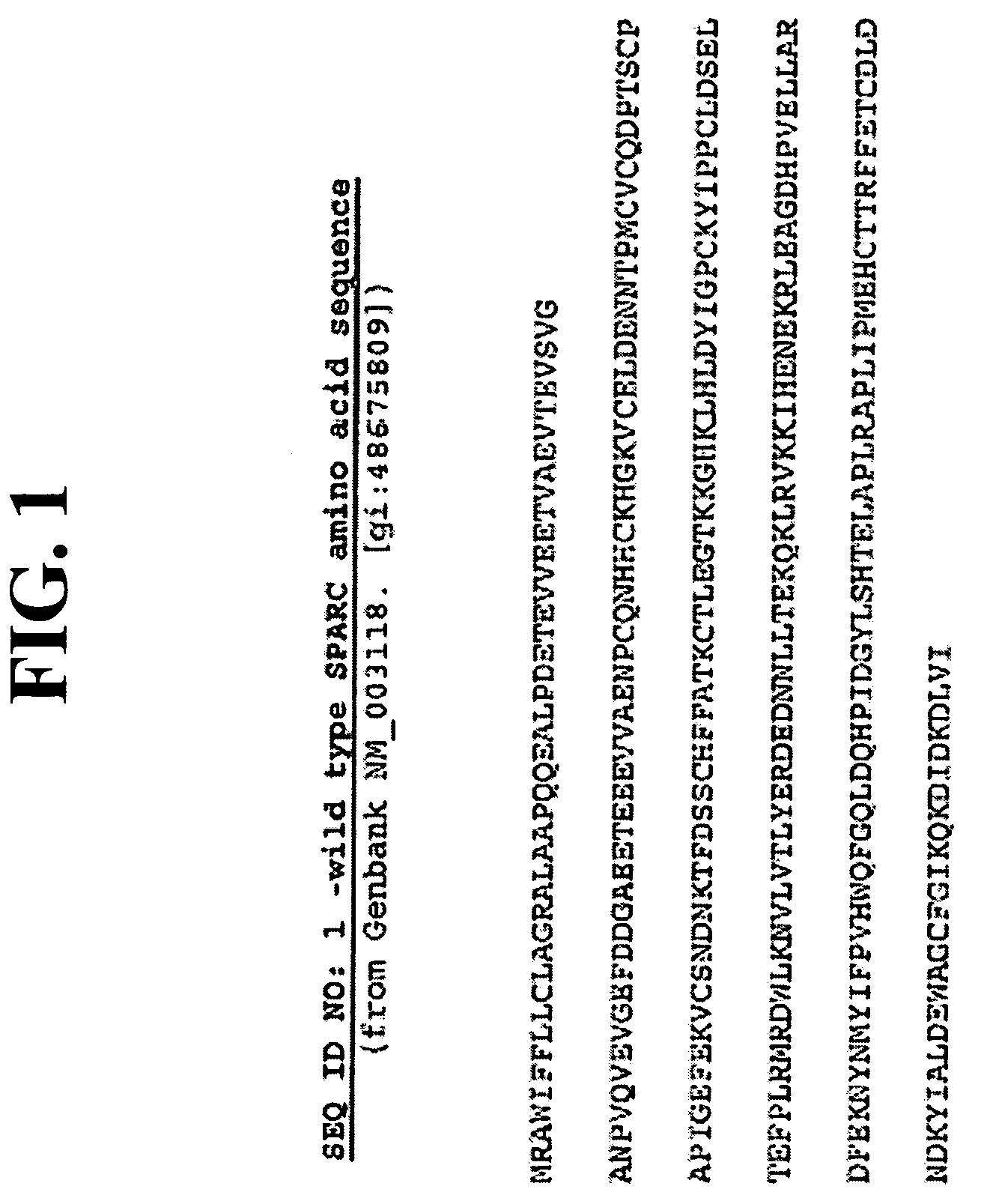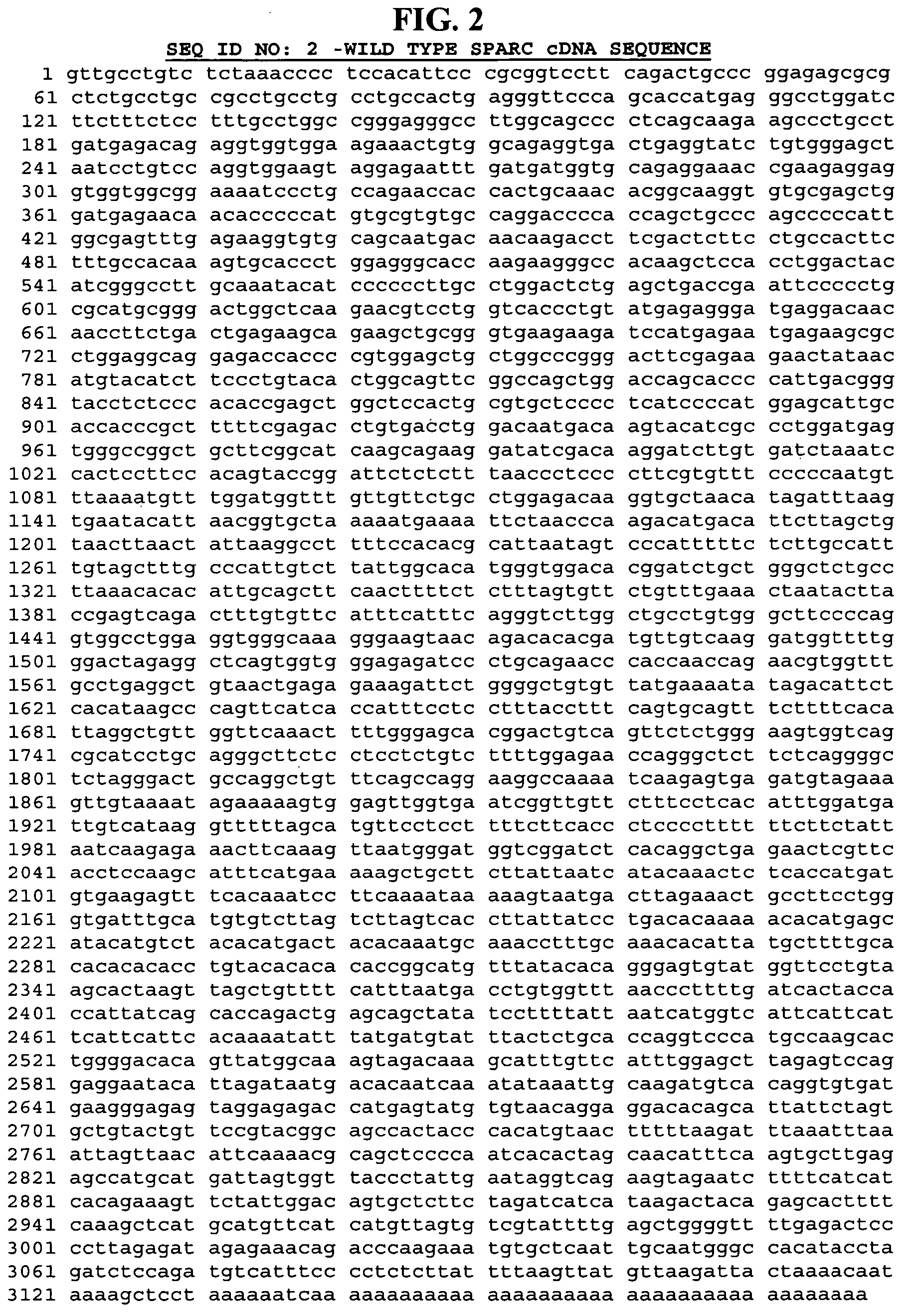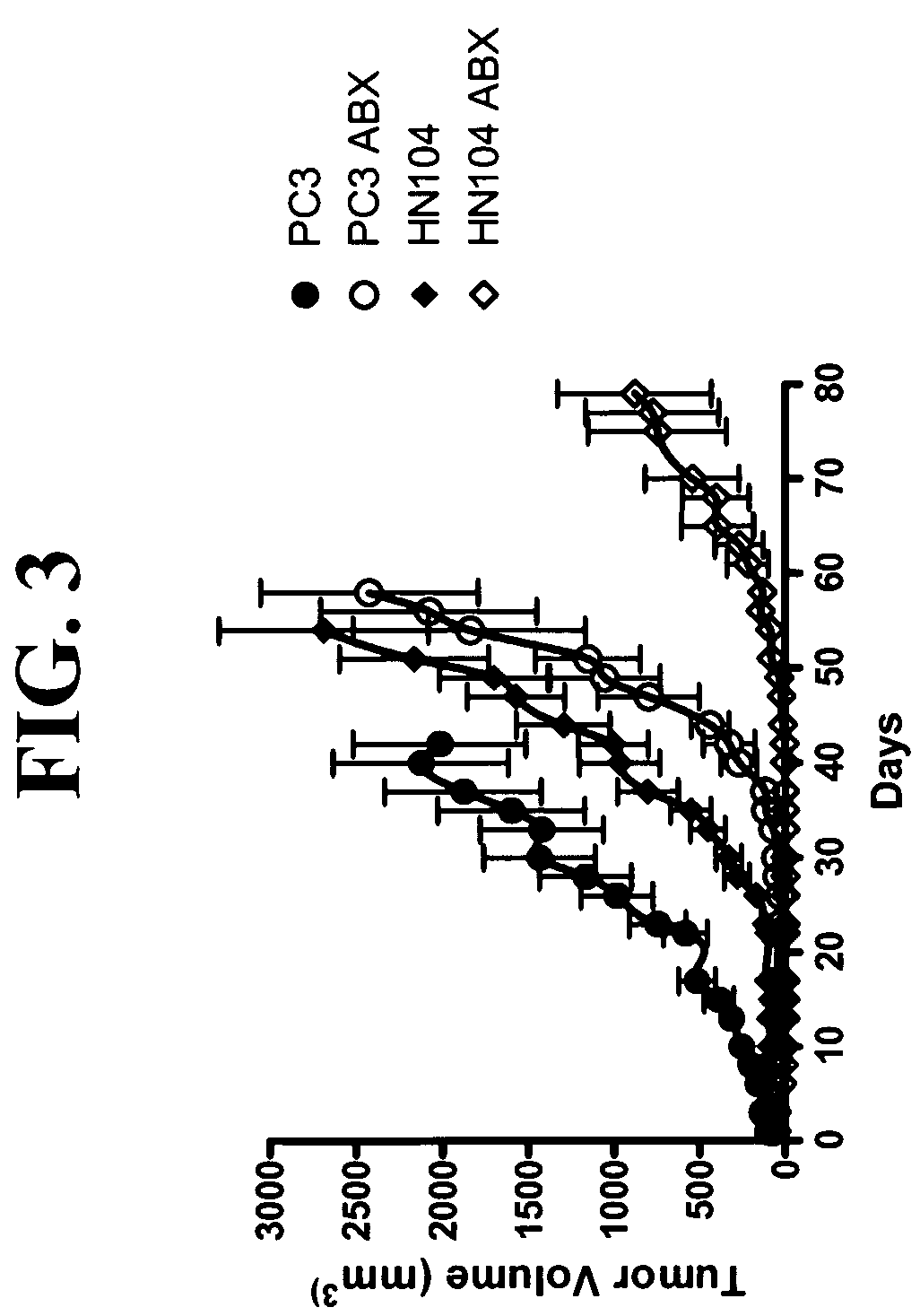SPARC and methods of use thereof
a technology of paclitaxel and saline, applied in the field of cancer treatment, can solve the problems of colloid formation when reconstituted with saline, poor solubility of paclitaxel,
- Summary
- Abstract
- Description
- Claims
- Application Information
AI Technical Summary
Benefits of technology
Problems solved by technology
Method used
Image
Examples
example 1
[0100]This example demonstrates the specific binding of anti-SPARC antibody to SPARC.
[0101]Whole cell extract was prepared from HUVEC cells by sonication. The protein was separated on a s5-15% SDS-PAGE, transferred onto PVDF membrane and visualized with a polyclonal antibody against SPARC and a monoclonal antibody against SPARC. Both antibodies reacted to a single band at 38 kDa, the correct molecular weight for SPARC. When MX-1 tumor cell line was analyzed by the same method, SPARC was detected in both the clarified cell lysate or the membrane rich membrane fraction.
example 2
[0102]This example demonstrates the absence of SPARC expression in normal tissues.
[0103]Normal human and mouse tissue were immunostained and scored (0-4) for SPARC staining using a tumor and normal tissue array. Immunostaining was performed using polyclonal rabbit anti-SPARC antibody. SPARC was not expressed in any of the normal tissues, with the exception of the esophagus. Likewise, SPARC was not expressed in any of the normal mouse tissue, except the kidney of the female mouse. However, it is possible that this expression was due to follistatin which is homologous to SPARC.
[0104]
SPARC Expression in Human Normal TissuesStomach0 / 8Colon0 / 9Rectum0 / 15Liver0 / 14Spleen0 / 10Lung0 / 14Kidney1 / 14Brain1 / 14Testis0 / 8Prostate0 / 3Heart0 / 9Tonsil0 / 10Lymph Nodes0 / 10Appendix0 / 10Esophagus5 / 5Pancreas0 / 5Eyeball0 / 5Ovary0 / 5MouseNormal TissuesLiver0 / 19Kidney (M)0 / 8Kidney (F)6 / 8Lung0 / 16Muscle0 / 20Brain0 / 20Heart0 / 18Stomach0 / 20Spleen0 / 20
example 3
[0105]This example illustrates the expression of SPARC in MX-1 tumor cells.
[0106]MX-1 cells were cultured on a coverslip and stained with an antibody directed against human SPARC using methods known in the art. Antibody staining was observed, which demonstrates that MX-1 is expressing SPARC. These results suggest that SPARC expression detected in MX-1 tumor cells is a result of SPARC secretion by MX-1 tumor cells. Staining was more intense for MX-1 tumor cells than that of normal primary cells such as HUVEC (human umbiblical vein endothelial cells), HLMVEC (Human lung microvessel endothelial cells), and HMEC (Human mammary epithelial cells). Though the majority of the SPARC staining was internal SPARC, significant level of surface SPARC was detected as demonstrated by confocal miscroscopy and staining of unpermeabilized cells.
PUM
| Property | Measurement | Unit |
|---|---|---|
| size | aaaaa | aaaaa |
| molecular weight | aaaaa | aaaaa |
| volumes | aaaaa | aaaaa |
Abstract
Description
Claims
Application Information
 Login to View More
Login to View More - R&D
- Intellectual Property
- Life Sciences
- Materials
- Tech Scout
- Unparalleled Data Quality
- Higher Quality Content
- 60% Fewer Hallucinations
Browse by: Latest US Patents, China's latest patents, Technical Efficacy Thesaurus, Application Domain, Technology Topic, Popular Technical Reports.
© 2025 PatSnap. All rights reserved.Legal|Privacy policy|Modern Slavery Act Transparency Statement|Sitemap|About US| Contact US: help@patsnap.com



